溴化钛(IV), 99%,Titanium(IV) bromide
产品编号:西域试剂-WR362704| CAS NO:7789-68-6| MDL NO:MFCD00011265| 分子式:TiBr4| 分子量:367.48
本网站销售的所有产品仅用于工业应用或者科学研究等非医疗目的,不可用于人类或动物的临床诊断或者治疗,非药用,非食用,
| 产品名称 | 溴化钛(IV), 99% |
|---|---|
| 英文名称 | Titanium(IV) bromide |
| CAS编号 | 7789-68-6 |
| 产品熔点 | 38-40ºC(lit.) |
| 产品沸点 | 230ºC(lit.) |
| 产品密度 | 3.25 g/mL at 25ºC(lit.) |
| 产品闪点 | 233ºC |
| 精确质量 | 363.62100 |
| LogP | 3.38240 |
| 外观性状 | 棕色晶体 |
| 溶解性 | Soluble in absolute alcohol. Decomposes in waterSoluble in chlorocarbons, benzene and alcohol. |
| 稳定性 | 如果遵照规格使用和储存则不会分解 避免接触氧化物。四溴化钛有两种变体,α变体低于-15℃稳定,β变体高于-15℃稳定。有潮解性,遇水分解,可溶于乙醇、乙醚。 |
| 储存条件 | 保持贮藏器密封 放入紧密的贮藏器内,储存在阴凉,干燥的地方 |
相关文档
化学品安全说明书(MSDS)
下载MSDS质检证书(COA)
相关产品
| 符号 |
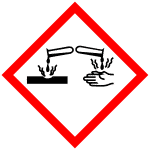
GHS05 |
|---|---|
| 信号词 | Danger |
| 危害声明 | H314 |
| 补充危害声明 | Reacts violently with water. |
| 警示性声明 | P280-P305 + P351 + P338-P310 |
| 个人防护装备 | Eyeshields;Faceshields;full-face particle respirator type N100 (US);Gloves;respirator cartridge type N100 (US);type P1 (EN143) respirator filter;type P3 (EN 143) respirator cartridges |
| 危害码 (欧洲) | C: Corrosive; |
| 风险声明 (欧洲) | R14 |
| 安全声明 (欧洲) | 26-36/37/39-45 |
| 危险品运输编码 | UN 3260 8 |
| WGK德国 | 3 |
| 包装等级 | II |
|
Section 1: Product Identification Chemical Name:Titanium (IV) bromide, min. 98% CAS Registry Number:7789-68-6 Formula:TiBr4 EINECS Number:232-185-0 Chemical Family:metal halide Synonym:Titanium tetrabromide
Section 2: Composition and Information on Ingredients IngredientCAS NumberPercentACGIH (TWA)OSHA (PEL) Title Compound7789-68-6100%no datano data Section 3: Hazards Identification With moisture, this material becomes a strong, corrosive acid. The liquid and its vapor are extremely corrosive Emergency Overview: to skin, eyes, mucous membranes and respiratory tract. Primary Routes of Exposure:Ingestion, inhalation, eyes and skin Eye Contact:Severe corrosive to the eyes. Exposure can lead to permanent eye damage. Skin Contact:Corrosive to skin. Contact can lead to redness, pain, blistering, ulceration, and scar formation. Material releases corrosive fumes, causing burns of the mucous membranes and lungs.Pulmonary edema Inhalation: may occur. Product is a highly corrosive acid. Ingestion may cause pain, vomiting, burns of mouth and throat, and Ingestion: ulceration of gastrointestinal tract. Acute Health Affects:Severe corrosive to eyes, skin, mucous membranes and respiratory tract. Ingestion may be fatal. Repeated or prolonged exposure to bromides by any route may cause skin rashes (bromaderma) and central Chronic Health Affects: nervous system depression, including ataxia, psychoses, memory loss, irritability, and headache. NTP:No IARC:No OSHA:No SECTION 4: First Aid Measures Immediately flush the eyes with copious amounts of water for at least 10-15 minutes. A victim may need Eye Exposure: assistance in keeping their eye lids open. Get immediate medical attention. Wash the affected area with water. Remove contaminated clothes if necessary. Seek medical assistance if Skin Exposure: irritation persists. Remove the victim to fresh air. Closely monitor the victim for signs of respiratory problems, such as difficulty Inhalation: in breathing, coughing, wheezing, or pain. In such cases seek immediate medical assistance. Seek medical attention immediately. Keep the victim calm. Give the victim water (only if conscious). Induce Ingestion: vomiting only if directed by medical personnel. SECTION 5: Fire Fighting Measures Flash Point:not applicable Autoignition Temperature:none Explosion Limits:none Extinguishing Medium:None. Material is non-flammable. If this product is involved in a fire, fire fighters should be equipped with a NIOSH approved positive pressure Special Fire Fighting Procedures: self-contained breathing apparatus and full protective clothing. Hazardous Combustion andnone Decomposion Products: Unusual Fire or Explosion Hazards: No unusual fire or explosion hazards. SECTION 6: Accidental Release Measures Small spills can be mixed with powdered sodium bicarbonate, lime, or calcium carbonate and swept up. Avoid Spill and Leak Procedures: raising dust. SECTION 7: Handling and Storage Store solid in a tightly sealed container away from moisture. Handle in a fume hood under a dry atmosphere of Handling and Storage: air or nitrogen. Prolonged exposure to the atmosphere may degrade the product. SECTION 8: Exposure Controls and Personal Protection Eye Protection:Always wear approved safety glasses when handling a chemical substance in the laboratory. Skin Protection:Wear protective clothing and gloves. Consult with glove manufacturer to determine the proper type of glove. Ventilation:The solid may form corrosive vapors. It should be handled in an efficient fume hood. If in form of fine dust and ventilation is not available a respirator should be worn. The use of respirators Respirator: requires a Respirator Protection Program to be in compliance with 29 CFR 1910.134. Ventilation:The solid may form corrosive vapors. It should be handled in an efficient fume hood. Additional Protection:No additional protection required. SECTION 9: Physical and Chemical Properties Color and Form:orange xtl. Molecular Weight:367.54 Melting Point:39° Boiling Point:230°C Vapor Pressure:no data Specific Gravity:2.6 Odor:pungent odor Solubility in Water:decomposes SECTION 10: Stability and Reactivity Stability:moisture sensitive Hazardous Polymerization:no hazardous polymerization Conditions to Avoid:contact with moisture Incompatibility:water, alcohols, oxidizing agents, oxygen and active metals Decomposition Products:none SECTION 11: Toxicological Information RTECS Data:No information available in the RTECS files. Carcinogenic Effects:no data Mutagenic Effects:no data Tetratogenic Effects:no data SECTION 12: Ecological Information Ecological Information:No information available SECTION 13: Disposal Considerations Disposal:Dispose of according to local, state and federal regulations. SECTION 14: Transportation Shipping Name (CFR):Corrosive solids, N.O.S. Hazard Class (CFR):8 Additional Hazard Class (CFR):NA Packaging Group (CFR):II UN ID Number (CFR):UN# 1759 Shipping Name (IATA):Corrosive solid, N.O.S. Hazard Class (IATA):8 Additional Hazard Class (IATA):NA Packaging Group (IATA):II UN ID Number (IATA):UN# 1759 SECTION 15: Regulatory Information TSCA:Not listed in the TSCA inventory SARA (Title 313):Title compound not listed. Second Ingredient:none SECTION 16 - ADDITIONAL INFORMATION N/A |
|
~% 
7789-68-6 |
| 文献:Journal of the Chemical Society, Dalton Transactions: Inorganic Chemistry (1972-1999), , p. 2541 - 2544 |
|
~% 
7789-68-6 |
| 文献:Journal of the Chemical Society, , vol. 47, p. 126 |
|
~% 
7789-68-6 |
| 文献:Journal of the American Chemical Society, , vol. 52, p. 4233 - 4239 |
|
~% 
7789-68-6 |
| 文献:Journal of the American Chemical Society, , vol. 52, p. 4233 - 4239 |
|
~% 
7789-68-6 |
| 文献:Ann. Chim. Phys., , vol. 9, p. 229 - 237 Comptes Rendus Hebdomadaires des Seances de l'Academie des Sciences, , vol. 120, p. 290 - 296 Ti: MVol., 3.5, page 189 - 199 |
|
~% 
7789-68-6 |
| 文献:B: B-Verb.3, 10.4.4.1, page 174 - 175 Inorganic Chemistry, , vol. 12, p. 920 - 922 |
|
~% 
7789-68-6 |
| 文献:Journal of Organometallic Chemistry, , vol. 35, p. 9 - 17 |
|
~% 
7789-68-6 |
| 文献:Journal of Organometallic Chemistry, , vol. 35, p. 9 - 17 |
|
~% 
7789-68-6 |
| 文献:Skrifter - det Kongelige Norske Videnskabers Selskab, , # 3 p. 76 C., , vol. II, p. 3361 |
| 上游产品 9 | |
|---|---|
| 下游产品 3 | |


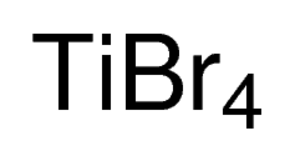

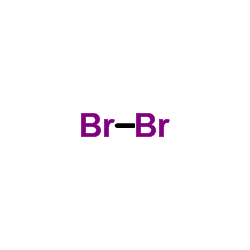




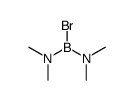

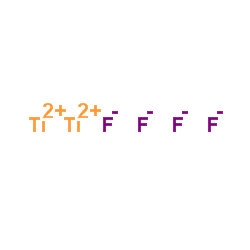
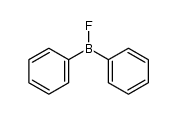


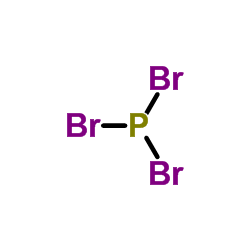
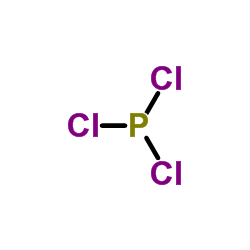

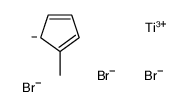





 浙公网安备 33010802013016号
浙公网安备 33010802013016号